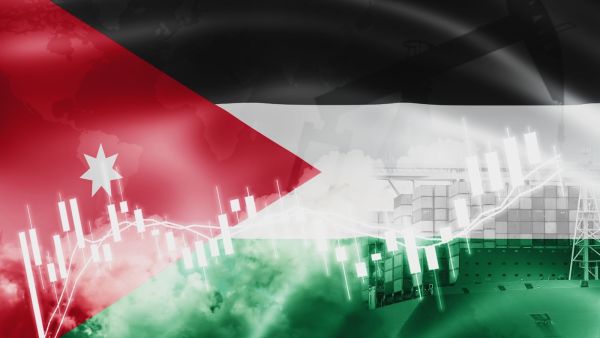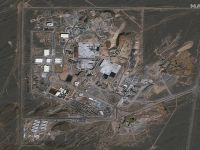A short introduction to Jordan in 77 years on the National Independence Day
ALBAWABA – Jordan is celebrating its 77th National Independence Day, marking a significant milestone in its economic development since gaining independence in 1946.
Read the full article on Jordan in 77 years
Over the years, Jordan has experienced notable changes, including the growth of its population, the development of the public and private sectors, economic democratization, financial crises, and more.
Population growth and GDP expansion
In the past 77 years, Jordan's population has more than doubled, growing from around half a million in the 1950s to over 11 million people in 2019. This rapid population growth has posed various challenges and opportunities for the country. In terms of economic growth, Jordan's Gross Domestic Product (GDP) has shown significant progress, increasing by over 750 percent from JOD 430 million ($600 million) in 1965 to JOD 32.47 billion ($45.74 billion) in 2021.

Resilience amid challenges
Despite enduring wars, refugee crises, civil conflicts, and financial turmoil, Jordan has emerged as one of the most resilient countries in the Middle East. The Jordanian Dinar, its national currency, is the second strongest in the region after the Kuwaiti Dinar, showcasing the stability of its economy. Jordan has successfully retained the value of its currency against the US dollar, even during global financial crises.
Read the full article on Jordan in 77 years
Key turning points in the economy of Jordan in 77 years
Overall, there are seven main turning points in Jordan’s economic development through the 77 years since independence.
1. Rise of the Public Sector
Initially, Jordan's economy relied heavily on micro-vocational enterprises and small-scale businesses. However, the public sector gradually grew to become the backbone of the country's economy, mainly through foreign aid from the United Kingdom (UK) and the United States (US). This aid played a crucial role in developing the public education system and other infrastructure projects.
2. Spike in Foreign Aid
Following World War II, the US initiated the Four Point Program to support friendly governments in the Middle East, including Jordan. The influx of foreign aid fuelled the growth of Jordan's public sector and contributed to economic democratization, expanding access to services such as electricity, water, healthcare, and education.
3. Economic Democratization
The race between the Soviet Union (USSR) and the West to win allies in the Middle East North Africa (MENA) region accelerated economic democratization in Jordan. This period saw the spread of essential services and infrastructure, benefiting even the most remote areas of the country. Strong ties with Western powers helped Jordan secure significant support for infrastructure and public services, neutralizing public discontent and discouraging leftist movements.
Read the full article on Jordan in 77 years
4. Boom in the Private Sector
The private sector in Jordan experienced significant growth, driven by waves of immigration and the demand for skilled workers. The establishment of the Arab Bank in 1930 marked the beginning of the documented private sector in Jordan. The influx of capital and expertise in the 1990s accelerated the growth of the private sector in Jordan. Over time, the private sector's share in the country's economy reached nearly 85 percent, employing around 2.2 million people.
5. Collapse of the Jordanian Dinar
In 1989, the Petra Bank collapsed due to a corruption scandal, leading to the depletion of the country's foreign currency reserves. To prevent a complete banking system collapse, the government accepted an adjustment package from the International Monetary Fund (IMF), which involved devaluing the dinar by 50 percent and rolling back government subsidies.
6. Surviving Regional Turmoil
Various regional conflicts, such as the Iraq-Kuwait war and the Syrian crisis, have had significant impacts on Jordan's economy. The influx of refugees, particularly Palestinians and Syrians, put strains on infrastructure and public services. The Jordanian government has shouldered a significant financial burden to support refugees, with declining international funding over the years.

7. Reforms, Privatization, and PPPs
Public-Private Partnerships (PPPs) have played a significant role in Jordan's economic reforms over the past 30 years. Following the privatization of state-owned enterprises in the 1990s, the government shifted its focus to PPPs as a means to procure and implement public infrastructure and services using the resources and expertise of the private sector.
One notable example of a successful PPP in Jordan is the Queen Alia International Airport (QAIA) expansion project.
Read the full article on Jordan in 77 years
Jordan has attracted more than JOD6.39 billion ($9 billion) in PPP investments since 2004, in addition to recently signed projects, at a combined value in excess of JOD 5.68 billion ($8 billion), since December 2022.

Another major reform entailed several adjustments to the income tax laws in Jordan. These reforms aimed at lowering public debt to about 77 percent of GDP by 2021. They were introduced as part of a program with the IMF.
Jordan’s tax revenue was reported at JOD4.68 billion ($6.598 billion) in December 2018. Up from JOD4.47 billion ($6.307 billion) in 2017, as reported by CEIC. Revenue from income and sales tax in 2022 totalled JOD5.76 billion ($8.12 billion), as reported by The Jordan Times.
Managing inflation
The inflation rate for consumer prices in Jordan moved over the past 52 years between -0.9 and 25.7 percent, according to World Data.info.

During the observation period from 1970 to 2022, the annual inflation rate averaged 5.8 percent in Jordan. But overall, the price increase was 1,636.98 percent. The global inflation median ranged from 1.5 to 4.7 percent in the 1960s, up to 14.4 percent in the 1970s, averaging around 14 percent in 1980.
Regionally, the MENA region’s inflation average ranged from 3.7 percent in 1970 and 4.9 percent in 2022, peaking at 14.2 and 11.3 percent in 1974 and 2008, respectively. The lowest regional inflation recorded was 0.7 percent, in 2020.
Read the full article on Jordan in 77 years
Jordan in 77 years: Where do we stand?
In March 2023, the government approved the Executive Program for Economic Modernisation (2023-2025), the strategic objectives of which are to raise annual income per capita by 3 percent and create new jobs.
This program is a framework for the execution of the Economic Modernisation Vision, which outlines several PPP projects at the estimated value of JOD 10 billion ($14.08 billion) in various sectors, such as water desalination, schools, clean energy, transportation, and infrastructure, within 10 years.
Since December 2022, the government brought in more than JOD 5.68 billion (USD 8 billion) worth of investments and PPP projects.
So far, the government was able to achieve 21 percent of the 10-year new economic vision targets.
Eventually, the government's aim for economic modernization ultimately hinges on its capacity to resolve as many of the sector's issues as soon as possible, while keeping the current pace. If it succeeds in doing so, the PPP market in Jordan may attract more and more domestic and international investors in the years to come.







